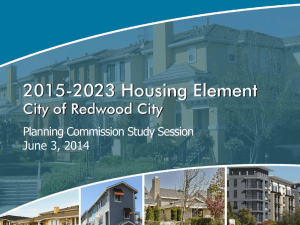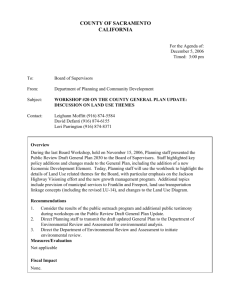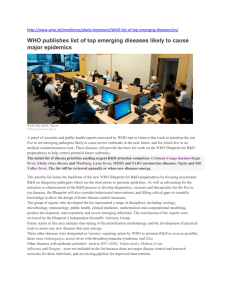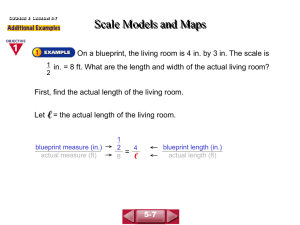01 Board-Workshop-20-Attachment-E
advertisement
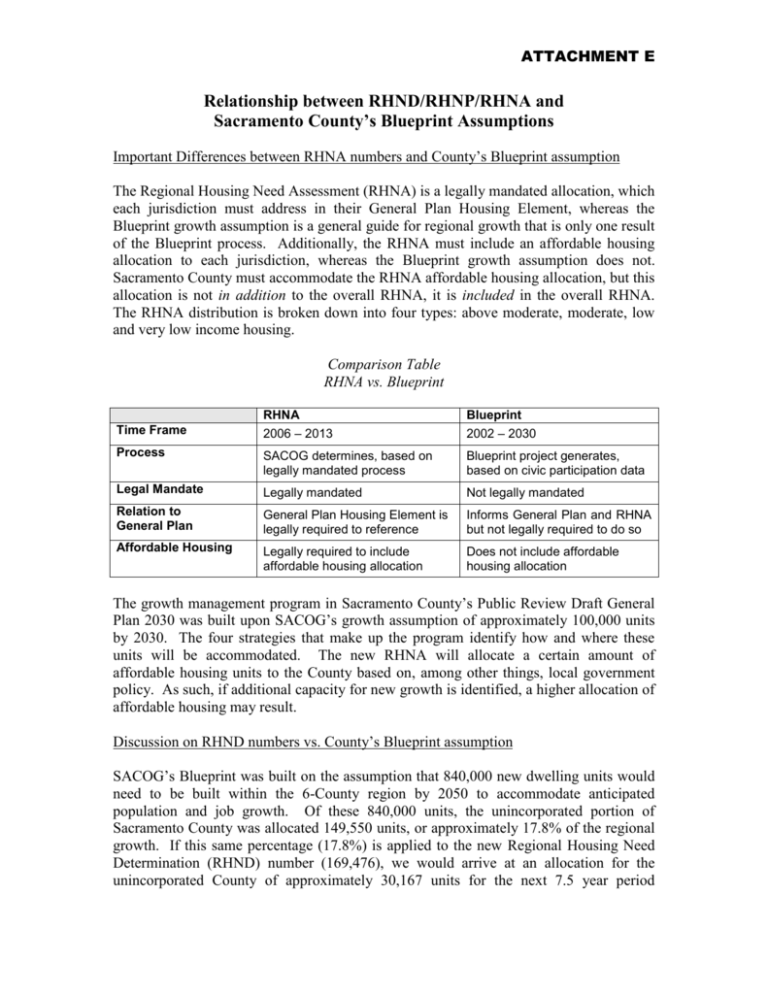
ATTACHMENT E Relationship between RHND/RHNP/RHNA and Sacramento County’s Blueprint Assumptions Important Differences between RHNA numbers and County’s Blueprint assumption The Regional Housing Need Assessment (RHNA) is a legally mandated allocation, which each jurisdiction must address in their General Plan Housing Element, whereas the Blueprint growth assumption is a general guide for regional growth that is only one result of the Blueprint process. Additionally, the RHNA must include an affordable housing allocation to each jurisdiction, whereas the Blueprint growth assumption does not. Sacramento County must accommodate the RHNA affordable housing allocation, but this allocation is not in addition to the overall RHNA, it is included in the overall RHNA. The RHNA distribution is broken down into four types: above moderate, moderate, low and very low income housing. Comparison Table RHNA vs. Blueprint RHNA 2006 – 2013 Blueprint 2002 – 2030 Process SACOG determines, based on legally mandated process Blueprint project generates, based on civic participation data Legal Mandate Legally mandated Not legally mandated Relation to General Plan General Plan Housing Element is legally required to reference Informs General Plan and RHNA but not legally required to do so Affordable Housing Legally required to include affordable housing allocation Does not include affordable housing allocation Time Frame The growth management program in Sacramento County’s Public Review Draft General Plan 2030 was built upon SACOG’s growth assumption of approximately 100,000 units by 2030. The four strategies that make up the program identify how and where these units will be accommodated. The new RHNA will allocate a certain amount of affordable housing units to the County based on, among other things, local government policy. As such, if additional capacity for new growth is identified, a higher allocation of affordable housing may result. Discussion on RHND numbers vs. County’s Blueprint assumption SACOG’s Blueprint was built on the assumption that 840,000 new dwelling units would need to be built within the 6-County region by 2050 to accommodate anticipated population and job growth. Of these 840,000 units, the unincorporated portion of Sacramento County was allocated 149,550 units, or approximately 17.8% of the regional growth. If this same percentage (17.8%) is applied to the new Regional Housing Need Determination (RHND) number (169,476), we would arrive at an allocation for the unincorporated County of approximately 30,167 units for the next 7.5 year period ATTACHMENT E (January 2006-June 2013). If we apply this same methodology to the 2005-2030 timeframe of the County’s updated General Plan (25 years total), we arrive at an allocation of 100,556 for the unincorporated County. This number is only approximately 500 units more than what has been assumed for the General Plan, representing a discrepancy of less than 1%. Again, it is important to note that SACOG has only begun discussing allocations and will most likely arrive at a number either higher or lower than the numbers shown above. This analysis was done for discussion purposes only and to clarify conversations that occurred during the last workshop. Comparison Table of Growth Assumptions for Unincorporated Sacramento County RHND* Allocation Blueprint General Plan 2030 Geographic Area SACOG Six-County Region Unincorporated Sacramento County Unincorporated Sacramento County Time Frame 2006 - 2013 2002 - 2050 2005 - 2030 Assumption 169,476 149,500 99,700 *The Regional Housing Needs Determination (RHND) is issued by the California Department of Housing and Community Development and covers the entire SACOG six-county region. SACOG will take this regional number and determine the allocation for each individual jurisdiction in the six-county area.
